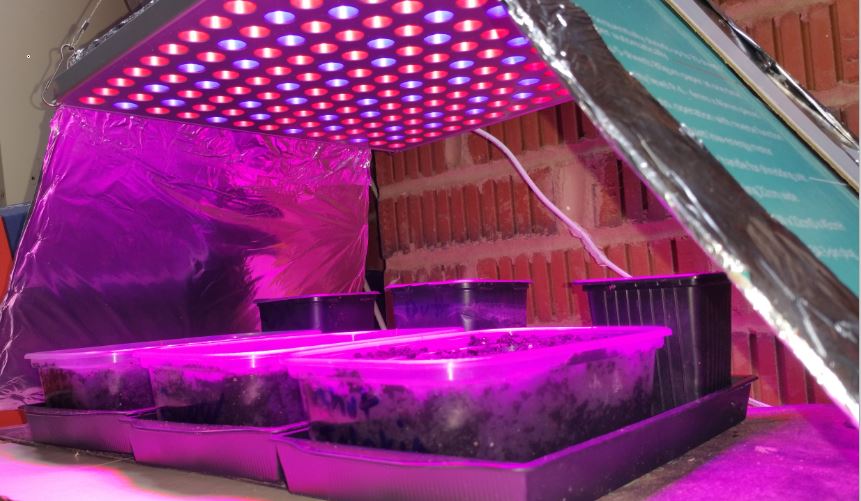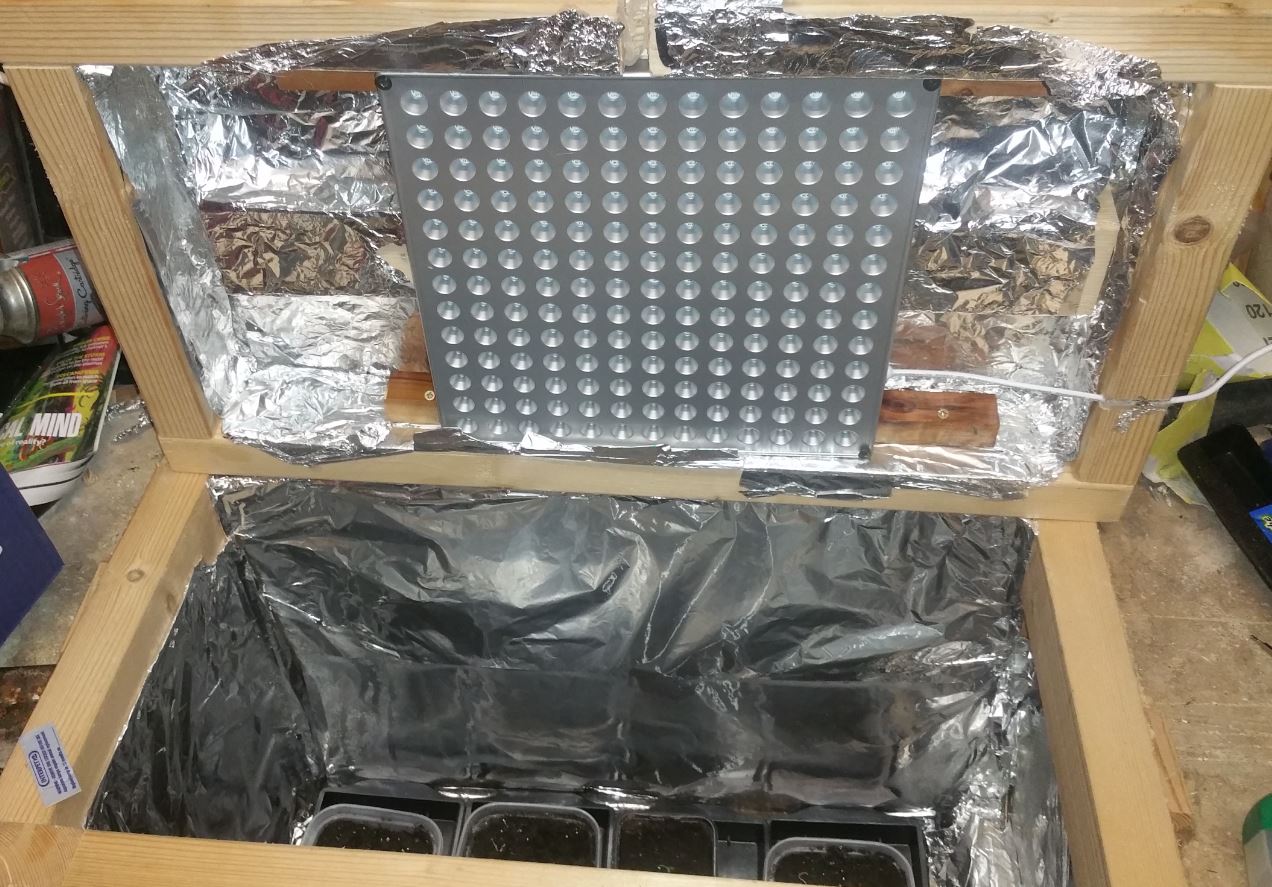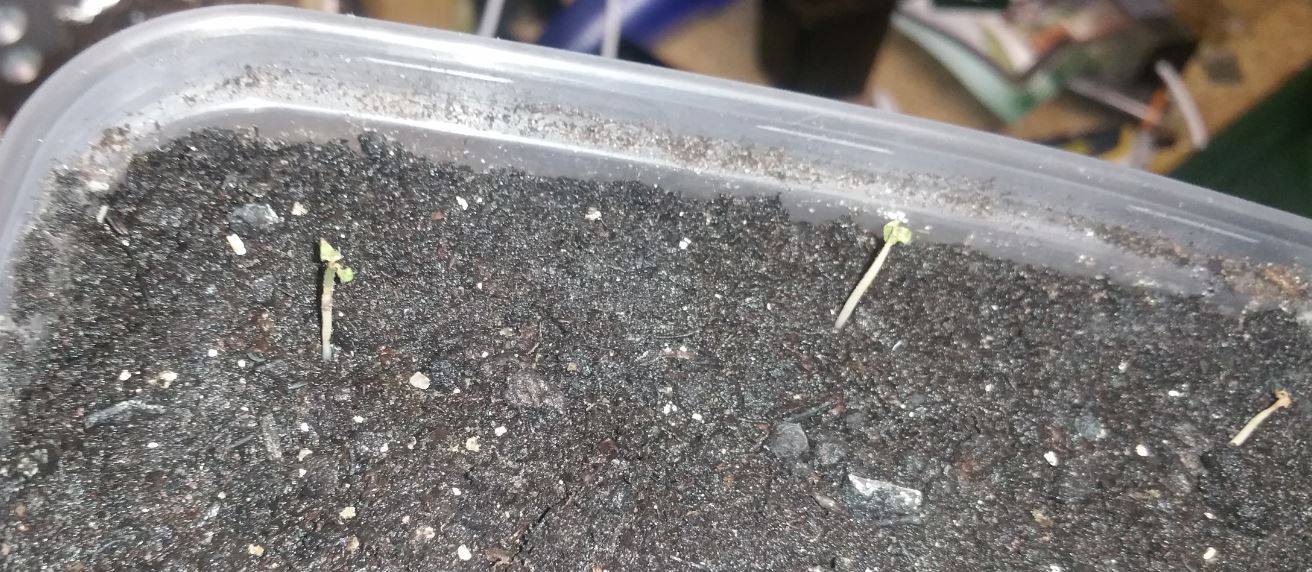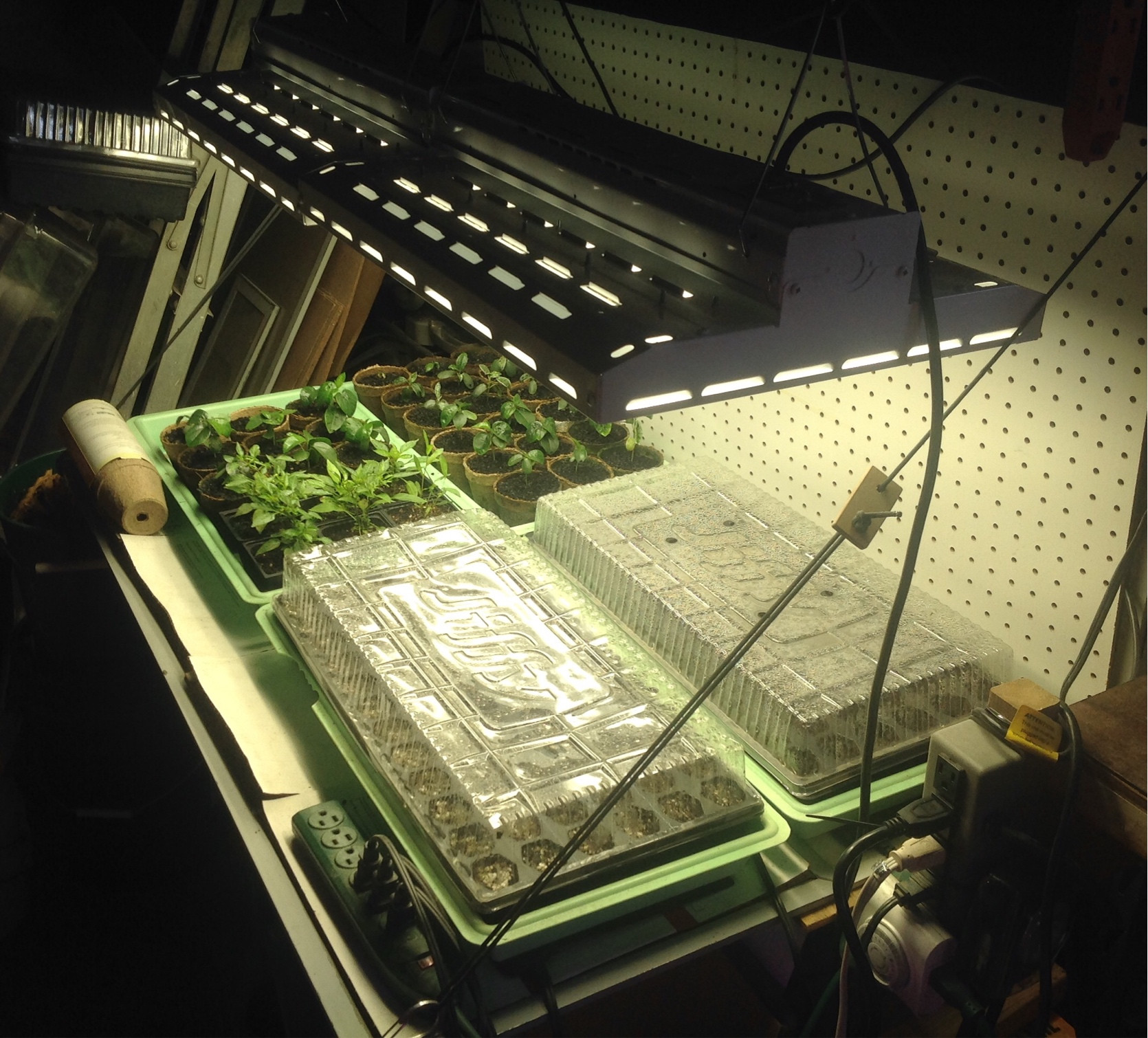You have cooked your baby plants! Get rid of the box, if you are growing indoors you do not need a heating mat. You do need thermometers; for soil and for the air. You will need to get a great fan to blow air. Easy to begin again.
I would use a 'dome' over your seed starting tray or fashion saran wrap to hold the heat and moisture until your starts show their second or third set of leaves. You need a thermometer to judge the temperature caused beneath a dome, saran wrap or in a reflective...oven. Do not soak the soil. Just the top quarter inch containing the seed should be kept moist.
Use potting soil without fertilizer, without moisture retention gimmicks, without compost. Just plain potting soil in your little pots to start seeds. Continue to use plain potting soil as long as your plants are in pots. Do not allow water to stand at the bottom of your pots. Raising the bottom of the pots off the surface so water tension doesn't inhibit drainage is also a good thing. No rocks, sand, gravel...no compost belong in pots. Just sterilized cheapo potting soil.
After seeds break surface the light should be on 18 hour days, not 12. I am reading that there is too much water in your equation; sitting in water, being sprayed with water and staying moist is not at all a good thing. Seedlings are tougher than that and just a little too much moisture will cause rot. That is why the use of a plastic dome or saran wrap is helpful at the very beginning. Watering is minimal when growing under a plastic dome, terrarium or saran wrapped seed trays. Very minimal.
Once you've got your second or third set of leaves the dome or saran wrap comes off. The fan is turned on. Those leaves should actually move in the breeze caused by the fan. That fan is on 24/7. The purpose is reducing fungal problems. Air movement is extremely critical. We also prune a bit if leaves are in excess, to allow air flow. Move pots away from one another.
Those lights might be fine at that height if your plants were on a flat surface and not in an oven. Also, you have to have a fan blowing the air. This also moves the O2 the plants made away from the leaf so the leaf is better able to uptake CO2 which it needs to do photosynthesis to make the plant's food. You need a thermometer (50 degrees is the low and 80 is the very highest...degrees Fahrenheit) and humidity monitor (depends on your plants but low humidity is a good thing).
You need to use timers. Start at 18/6 then when flowering starts (a month or two down the road) you switch to 12/12. (Plants in the dark stay in the dark undisturbed during this time, no cracking open a door and letting in light...you can use a green light).
Make sure your fertilizer is lower in N than in P and K. So NPK formulation of 5-7-6 would be perfect. Even even numbers such as Osmocote 14-14-14 extended release used at half the amount of applications would work. You add too much Nitrogen and you won't get flowers and chilis.
White Fly has been the biggest problem with growing chilis. Keep an eye on your plants...do not bring any strange plants with strange soil into your grow room. No smokers touching plants or smoking near plants.
Sorry, forgot about pollination. All you need to do each time you water and your plants are in flower, before watering, is shake the plant. A good shake not so hard to break limbs, leaves but this will pollinate your plants to make fruits, chilis.





